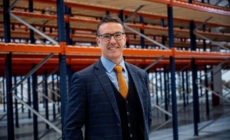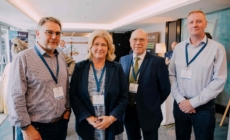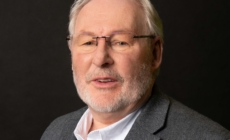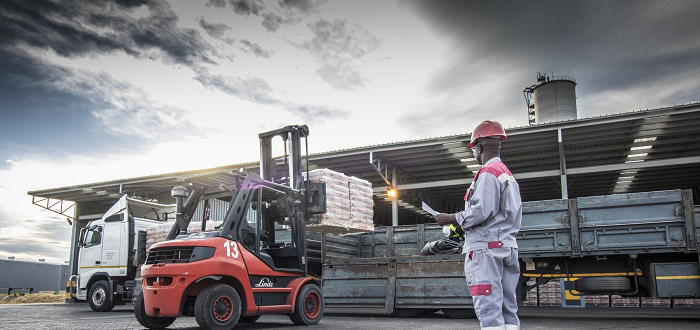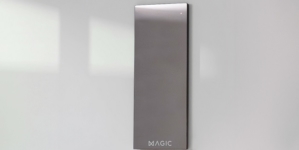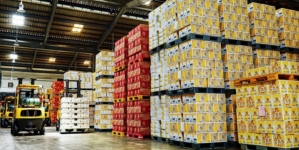-
ROSSLARE EUROPORT TARGETS HEALTH & SAFETY WITH CAMERA TELEMATICS PARTNERSHIP - 2 days ago
-
Landmark Study Reveals Wearable Robotics Significantly Boost Safety and Efficiency in Industrial Environments - July 24, 2024
-
Visku Tackle The Retail Seasonality Challenge One Pallet At A Time - July 22, 2024
-
KAMMAC AND BERGEN LOGISTICS STRENGTHEN FASHION & LIFESTYLE SERVICES IN THE UK - July 19, 2024
-
TENTBOX EXTENDS PARTNERSHIP WITH ARROWXL TO SUPPORT INCREASING DEMAND - July 17, 2024
-
The Perfume Shop improves customer journeys while driving profitability in partnership with Scurri - July 17, 2024
-
ZEROMISSION SECURES £2.3M ($3M) INVESTMENT TO ACCELERATE ELECTRIC FLEETS - July 16, 2024
-
BCMPA CELEBRATES SUCCESS OF 2024 CONFERENCE - July 15, 2024
-
Best of the Best: Jungheinrich Celebrates Triple International Award Win - July 12, 2024
-
GOPLASTICPALLETS.COM CALLS ON NEW CHANCELLOR RACHEL REEVES TO CONSIDER PLASTIC PACKAGING TAX REFORM - July 10, 2024
Countryside Ohorongo decides on third packaging line, supplied entirely by BEUMER:
Greater than the sum of its parts
Ohorongo Cement (PTY) Ltd., part of Schwenk Zement KG, is the only cement manufacturer in Namibia, Africa. Its mission is to cover the national demand for high-quality cement. Up to now, the company has used two packaging lines to transport the material quickly, and above all, safely on to trucks, enabling delivery to customers up to a thousand kilometres away. This however was no longer sufficient, and in order to increase the throughput of the sometimes very fine cement, BEUMER Group supplied and installed a third line entirely from its own product line – and in a very tight timeframe.
Otavi, the nearest small town, is 20 kilometres away. Tsumeb is north of it. One single road runs through the wide open planes. Schwenk Zement built the in the Namibian region of Otjozondjupa which is rich in limestone. Ohorongo Cement, or simply Ohorongo, is a wholly owned subsidiary of Schwenk Zement. The plant produces five different cements, to which Manfred Pirker, plant manager, emphasises: “Our building material is of particularly high quality.”
Decision for the right partner
After the clinker is produced, it is milled into cement. It is then made available either as loose product delivred into a bulk tanker, or in 2,000 kilogram big bags, or filled into paper bags. “We use 50 kilogram bags in this plant,” explains Mr. Pirker. “After the filling, they are stacked on pallets and covered with a stretch film.” For this process, the plant has used two packaging lines, for which BEUMER Group supplied and installed one BEUMER paletpac high performance layer palletiser per line and packaging systems of the BEUMER stretch hood product lines. “But we could not cover the growing demand for cement anymore,” says Mr. Pirker. “We urgently needed to increase our throughput.”
Ohorongo has had very good experience with the two existing packaging lines. The responsible management therefore knew from the start that only BEUMER Group, the single-source provider for filling, palletising and packaging technologies, was to become its partner for supplying and installing the third packaging line. Mr. Pirker says: “We were convinced by the very good service and support on site over the years.”
A hot issue
Beckum, the headquarters of BEUMER Group in Germany, received the inquiry from Ohorongo at the end of 2014. Both companies quickly agreed on the scope and scheduling, and signed the contract without delay. Unlike the first two packaging lines, this contract also contained a BEUMER fillpac Bag filling system. Hermann Krumkamp, Senior Project Manager at BEUMER Group, remembers: “We immediately started with the project execution at the beginning of 2015. We had to consider the local climatic conditions, among other things.” In the desert regions, day temperatures can reach 40 degrees Celsius and more. “This may influence the flow charecteristics of the cement as well as the elasticity of the stretch film,” explains Mr. Krumkamp. The machines were designed accordingly. The engineers also had to adapt the system to the newly built extension to the existing building. The containers with the new machines arrived at Ohorongo Cement in August. “We had to wait with installation, however, for the new building for the third packaging line to be completed”, says Mr. Krumkamp. The specialists started with installing the machines in November 2015.
Filling process: not too much, not too little
As the produced cement is particularly fine, BEUMER Group installed a BEUMER fillpac R rotary packing machine with eight filling spouts that operates according to the impeller filling principle. Krumkamp explains: “The weighing electronics are unique. This is because the product is filled according to the gross weight principle, i.e. the bags are weighed during the filling process. The BEUMER fillpac R is therefore equipped with a calibration facility integral with the weighing equipment.” The weighing electronics of the machine ensure exact filling of the bags. A special software enables each filling spout to constantly, with every rotation of the packer, compare the weight and make necessary adjustments to maintain consistent and accurate bag weight of the packed product.
The impeller filling sytem is characterised by its speed and maximum material throughput.
BEUMER Group also included a BEUMER bag placer with bundle magazine of the latest technology to further increase the efficiency of the filling system. Servomotors drive the application unit and the suction gripper automatically, precisely and with high levels of energy efficiency. The gripping system and the application unit apply the bag from the bag bundle safely onto the filling spout. 2,400 bags per hour can be applied like this with high precision.
Gentle palletising is ensured
BEUMER Group installed a BEUMER paletpac 3000 layer palletiser for fully automatic, reliable and most of all fast palletizing. This system precisely stacks 50 kilogram bags layer by layer in a 5-bag pattern onto the pallets. Krumkamp explains: “The system includes a twin-belt turning device, so the bags can be turned to the required position quickly, gently and without affecting their dimensions. Regarding the positioning accuracy, this device offers an immense advantage when compared with conventional turning processes.” The system component moves the bags without deforming them from a mechanical viewpoint. Two parallel belt conveyors are used instead. They turn the bags by moving at different speed. They also move the bags into the required position very gently . The intelligent control of the twin-belt turning device takes into account the dimensions and weights of the bags in order to achieve an exact positioning preset by the respective packing pattern.
Packed fast and safely
Roller conveyors transfer the completed bag stacks to the packaging system BEUMER stretch hood A. Krumkamp explains: “We have completely redesigned this machine from the ground up. It is even more easy and safe for the user to operate than the existing systems. In order to facilitate the work for the maintenance personnel and to ensure high system availability, the system no longer needs a service platform. Maintenance work, such as changing the blades or the sealing bars, is handled at floor level. Additional benefits include the compact design, resulting low machine height and a small footprint. Mr. Pirker says: “This means that the BEUMER stretch hood A fits perfectly into the new hall.”
A film transport system, which is particularly gentle on the material, delivers the previously cut and sealed film hood into the system. On its way to the stretching unit, the sealing seam on the film hood cools down so that it can be stretched without losing time. This allows for the elimination of energy-consuming cooling units and efficiency-reducing cooling times. This means that the pallets can be packed in a shorter cycle time. Hermann Krumkamp is delighted: “We handle 60 pallets per hour. This number can be increased if required.”
But there was something to consider regarding the packaging: “Unlike transportation in Germany, in Africa the material may need to travel by truck not only a few hundred kilometres, but often up to a thousand kilometres,” Mr. Pirker says. In addition, high temperatures soften the material of the film. Pirker explains: “We use film of 80 and 100 micrometers in thickness in order to obtain the required transportation safety.”
Ohorongo put the systems into operation in May 2016. Manfred Pirker, plant manager, is happy: “A packaging line that is customised to our specific requirements has been built.” The tight timeframe could only be held because all people involved in the project collaborated intensively. The cement manufacturer was convinced of BEUMER Group’s sophisticated technical planning, the fast development as well as optimal adaptation of the systems.





